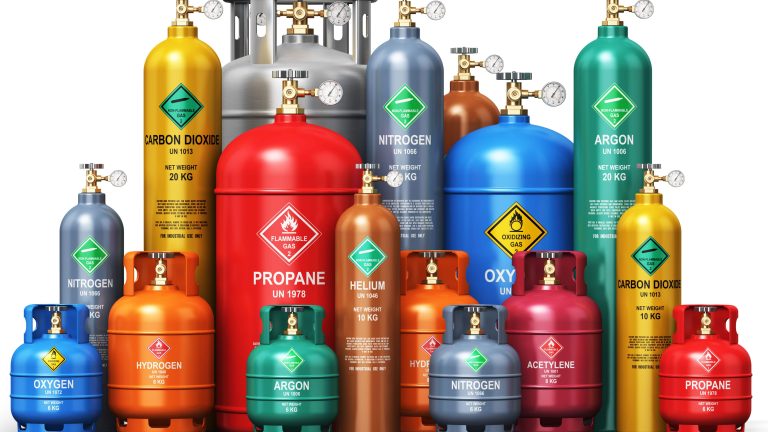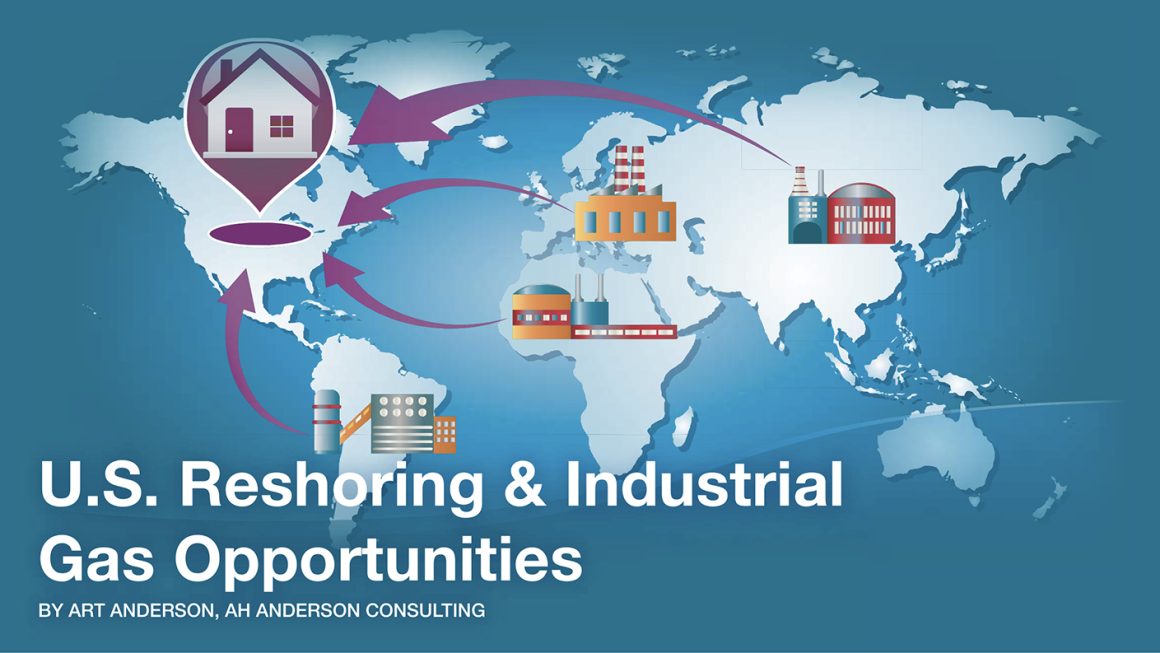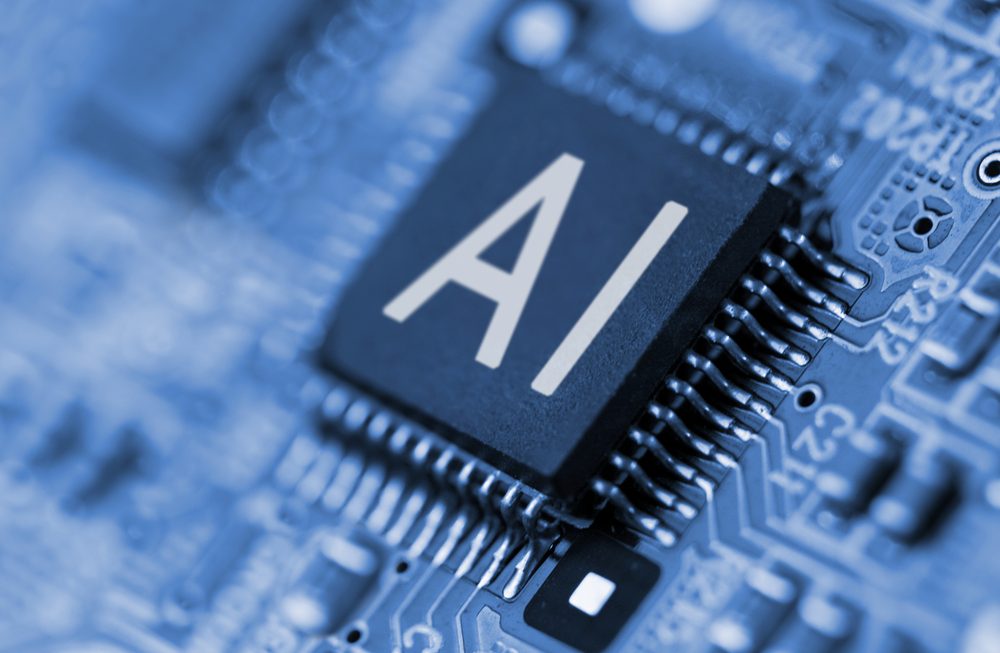Special thanks to Matt Adams, Executive Vice President, Electronic Fluorocarbons, Christian Card, Vice President of Sales, Noble Gas Solutions, and Mike Corbett, Managing Partner for Linux-Consulting for their contributions. The content for this blog was published in the November 2022 US Print edition of GasWorld.
Specialty gases have become critical components for nearly every industry. The offerings are numerous and utilised in a variety of end-markets driven by trends in healthcare, environmental, semiconductor, food and beverage and research. For the major producers of these products, Tier One industrial gas companies, their portfolio may only consist of 5-10% of specialty gases, but it is arguably one of their most profitable segments. On the contrary, at the larger independent producers the specialty gas portion of their portfolio is often a bit higher, necessitating greater focus, resources and investment to be competitive in this space. This article will provide background on this intriguing segment of the industrial gas market, starting with its humble beginnings, current trends, challenges and market drivers, as well as the outlook and opportunities that will impact this segment for the foreseeable future.
The Past
When one researches the ‘beginning of specialty gases’, MATHESON is largely credited with being one of the first companies to begin offering a reliable source of high quality scientific gases and equipment back in 1927. Some of MATHESON’s more notable accomplishments include the development of the lecture bottle, now used by virtually every major college and university in the world, and the supply of ultra-pure gases that served as standards for the first gas chromatographs (GCs). These high quality scientific gases eventually became termed ‘specialty gases’ and covered not just industrial gases having purities exceeding 99.999% (>five nines pure), but gas mixtures containing components at concentrations extending from the percent range down to parts-per-billion (ppb) and sometimes even parts-per-trillion (ppt) levels.
The majors (Air Liquide, Praxair, Linde, Air Products) during the 1950s and 1960s began to dominate the specialty gas industry, primarily focused on the large and national accounts, as well as the high-tech industries considered to be out of the technical expertise of the independent distributor. However, there were a few small players who started focusing their portfolios on the delivery and applications of specialty gases. One of the early examples in the US was Scott Specialty Gases, which eventually was acknowledged to be the best-in-class for EPA protocol, natural gas and many more high end mixtures. Unlike the majors, all it did was specialty gases and related equipment, and was very well connected with the standards bodies (ISO, for example) and research entities.
In a similar vein, Spectra Gases, American Gas Group and several others began to carve out profitable niche markets, and eventually own significant shares in select markets. So much so, the majors took notice and in the early 2000s many of these independent specialty gas players were acquired by Air Liquide, Praxair, Linde, Air Products, and even some of the independents such as Airgas.
The historical and continuing interest in specialty gases was driven by specific application needs that only specialty gases could address. For example, healthcare’s desire to know and measure what was going on in the human body led to the development of the blood gas analyser (in the 1950s) to measure oxygen, carbon dioxide (CO2 ) and other variables in the blood. This and other discoveries sparked a continuing development of diagnostic equipment utilising a wide variety specialty gases and chemicals in their operation and calibration.
The discovery of the transistor birthed the modern day semiconductor industry, which led to the mass production of computer chips starting with the transistor radio (1960s), then calculators, clocks, PCs – and the rest is history. With each generation of computer chips (semiconductors), came ever more specialty gases and chemicals consumption. Similar stories can be told for the environmental (emissions monitoring), food and beverage (food-grade applications) and research (analytical and calibration) sectors, as well as many other end-markets. The market only continues to expand.
The discovery of the transistor birthed the modern day semiconductor industry, which led to the mass production of computer chips starting with the transistor radio (1960s), then calculators, clocks, PCs – and the rest is history. With each generation of computer chips (semiconductors), came ever more specialty gases and chemicals consumption. Similar stories can be told for the environmental (emissions monitoring), food and beverage (food-grade applications) and research (analytical and calibration) sectors, as well as many other end-markets. The market only continues to expand.
With market expansion and strong margins, eventually greater competition forced this segment to become more efficient, just like the rest of the industrial gas industry. In the 1980s/1990s there started to be increased focus on automation in all areas of industrial gases. It started with bulk gases and gradually moved to packaged gases, with a focus initially on industrial and the larger volumes. However, the move to automate the majority of the ‘end to end’ specialty gases production process was demonstrated by a BOC Australia facility in 2017, with others following shortly afterwards.
However, specialty gases have taken it a step further (driven by their customers), and producers are sharing specialty gas specifications and data with their customers electronically, sometimes even before the product ships from the producer. This exchange of data is fast becoming the norm in semiconductor and other hi-tech end markets.
The Present
As with every segment of the industrial gases business, there are several trends and challenges that are affecting companies’ level of success in the specialty gas arena. From a trends perspective, the tightening of product specifications, near shoring of supply chains, and reshoring of semiconductor manufacturing are impacting the space in significant ways.
Product specifications for many process continue to get tighter and tighter, as customers improve their products and discover that they need higher purity gases to eliminate potential areas of concern. For example, in the high-tech end markets of semiconductors, aerospace and research, data on impurities that may not have been in the spec previously, are now becoming more important in the eyes of the customer. This trend drives the need to develop existing analytical processes, or even requires investment in new technology to stay current or ahead of the latest trends.
The resiliency of supply chains continues to be top of the mind for specialty gas producers and their customers. To better ensure continuity of supply, customers are encouraging (or even mandating in certain instances) the supplier to near-shore (or ‘domesticate’) their supply chains as much as possible. At a minimum, it has increased inventory levels at the customer and local/regional distribution sites.
At the maximum, it may involve the supplier making domestic distribution or production investment with some assurance of future business. If these steps are not able to be done to the satisfaction of the customer, it often causes them to further diversify their supply base to spread the risk.
At the maximum, it may involve the supplier making domestic distribution or production investment with some assurance of future business. If these steps are not able to be done to the satisfaction of the customer, it often causes them to further diversify their supply base to spread the risk.
The concept of domesticating the supply chain is clearly being driven by our customers, looking for local/regional suppliers, and encouraging us to build and invest domestically. This is not only driving new CAPEX requirements with and without customer commitments, but also forcing us to think more creatively and strategically with both OPEX and CAPEX spending.
Matt Adams, Executive Vice President, Electronic Fluorocarbons
As a result of continuing supply chain issues, customers are now casting a ‘wide net’ to other suppliers to ensure continuity of supply. No longer are one or two suppliers enough, but customers are looking for more as key products become short in supply.
Christian Card, Vice President of Sales, Noble Gas Solutions
Reshoring of semiconductor manufacturing back to the US and Europe, from Asia, is a huge deal for decades to come. The recent signing of the CHIPS and Science Act in the US is an example of the momentum around this trend. The legislation, which includes roughly $52bn in subsidies to boost US chip production, will benefit all the major semiconductor players.
This year, Intel broke ground on two new semiconductor production facilities; Taiwan Semiconductor Manufacturing (TSMC) is also constructing one in Arizona, which represents the largest foreign direct investment in Arizona’s history; Samsung announced investment of up to $200bn in Texas; and Micron Technology announced plans to invest $100bn through the end of the decade to build leading-edge memory manufacturing in multiple phases in the US. Several other companies will benefit, including Global Foundries, Texas Instruments, Applied Materials and Lam Research, among others.
The impact of reshoring of semiconductor production and its ecosystem to the US and EU and even Japan, is one of the biggest rends affecting the electronic specialty gases space. The question is how much of the Asia infrastructure will need to move to support the US, EU and Japan semiconductor industries [in the] long-term.
Mike Corbett, Managing Partner, Linux-Consulting
A world-class semiconductor factory will use >50 specialty gases depending on the process and spend tens of millions of dollars annually on those some geographies. So much so, this unpredictability has caused us to be more disciplined/detailed around cylinder planning/forecasting, time horizons, inventory sizing and such, to minimise customer impact.
Rising customer expectations is both an ongoing trend as well as a challenge across most end-markets. Customers not only are tightening purity specs and mixture tolerances/accuracy, but continue to expect repeatable, error-free and often automated performance. This demand for ‘near’ perfection poses a decision for many producers, to either reinvest what is needed to stay competitive, or move to the forefront by raising reinvestment in operations and new product development to better anticipate customer needs.
The increased quality and analytical requirements to ensure limited variation ‘lot to lot’ by the suppliers has been a never-ending challenge for suppliers to the semiconductor industry. Customers of leading-edge fabs just cannot afford to have any product variation to impact production wafers valued at thousands of dollars each and a fab producing thousands of wafer starts per day.
Mike Corbett, Managing Partner, Linux-Consulting
The Future
One thing for certain, is that the outlook for the specialty gases market is bright and filled with opportunity, despite the challenges it faces. The consensus growth forecast for specialty gases is 5-8% over the next 3-5 years, which is 1.5-2x the core industrial gas growth.
For semiconductors, the largest end market for specialty gases, the continued growth in communications (mobile, 5G), consumer electronics, data (IoT, analytics, AI/ML) and transportation (vehicle content, autonomous/assisted driving) is forecast to grow in the high single-digits range, with some segments in the low double-digits over the same timeframe. In addition to the growth in the volume of semiconductors shipped, the complexity is increasing as more transistors are being placed in the same 3D space. As the density of the device increases, it drives greater demand for select specialty gases as well as the need for higher purity.
In healthcare, the use of specialty gases is driven by increasing therapeutic, diagnostic and surgical needs. These needs, along with the ageing demographic (especially) in western societies, along with the growing worldwide sophistication of healthcare capabilities, means growth in this segment is expected to be in the mid-single-digit range for the medium term.
In the calibration segment, which spans continuous/mobile emission and ambient monitoring on the environmental side, to being used as a reference to calibrate gas analysers or detectors in most every end-market, applications and usage are forecast grow at slightly above core industrial gas levels. As a few potential examples, the energy transition is driving the need to look at hydrogen purity from a variety of different manufacturing processes, all generating a different set of impurities which may/will require new standards for select end market uses. Likewise, with every new specialty material introduced in a semiconductor device, there is a need to not only measure its purity, but the impact of its purity on the process and maybe even develop a standard if it does not exist. And finally, at the recent gasworld CO2 Summit 2022 in Chicago, the interest in using renewable CO2 from non-traditional sources such as biogas is yet another example. It was acknowledged that before CO2 is more widely used from these sources in certain applications (food and beverage, for example), it will require a greater level of analysis and understanding of non-traditional impurities that are present in biogas-generated CO2, which is good news for specialty gases. In addition to organic and emerging growth in these segments as well as others there are related opportunities in this space for specialty gas producers.
There is no shortage of new specialty gas opportunities. For example, although requirements seem to be constantly changing in the cannabis market and it shows potential, a variety of segments in food and beverages are continuing to grow, as well as pharmaceutical research and even the hydrogen space due to the energy transition. These are all showing growth potential, just to name a few.
Christian Card, Vice President of Sales, Noble Gas Solutions
One overarching opportunity is offering sustainable specialty gases as customers look to lower their carbon footprints. The end market leading this opportunity is the semiconductor industry, largely because some of its critical raw materials have significant greenhouse warming potential (think NF3 or nitrogen trifluoride).
Sustainability of the products being used in semiconductor manufacturing has had the focus of the industry for several years. However, as many of the semiconductor industry’s biggest customers such as Google and Apple start to advance their Net Zero strategies, it has raised the focus of the industry leaders to make commitments to be Net Zero by a particular date.
Mike Corbett, Managing Partner, Linux-Consulting
As a result of this pressure, there are several alternatives currently under development. Also, how one looks at their challenges, can also lead to opportunities in this space. The challenges of higher purity, particle reduction, enhanced package safety, and greater accuracy are often incorporated in a technology roadmap as part of the supplier’s new product development plan. By engaging customers early in this process, in helping to define expectations clearly and even jointly develop solutions, is critical in converting these challenges into mutually beneficial opportunities.
A robust technology roadmap is critical to identify those opportunities in partnership with key customers. However, integral to this ‘product-focused’ roadmap is often a complimentary analytical equipment roadmap that is able to support delivery of those tighter product specifications, especially if you serve high-tech end markets. For example, being ready and able to participate in ‘Ship-to-Control’ methodologies requires a level of analytical and data automation just to be an approved supplier for some companies.
Matt Adams, Executive Vice President, Electronic Fluorocarbons
In Closing
Specialty gases is one of the most unique and dynamic segments of the broader industrial gas market. Its large portfolio of products that meets customer needs across a wide array of end markets historically has delivered above average growth, which continues up to present day.
Looking forward, specialty gases is forecast to continue to be one of the fastest growing segments of industry gases for the short to medium term, with both majors and independent specialty gas producers well positioned to support this segment for years to come.




